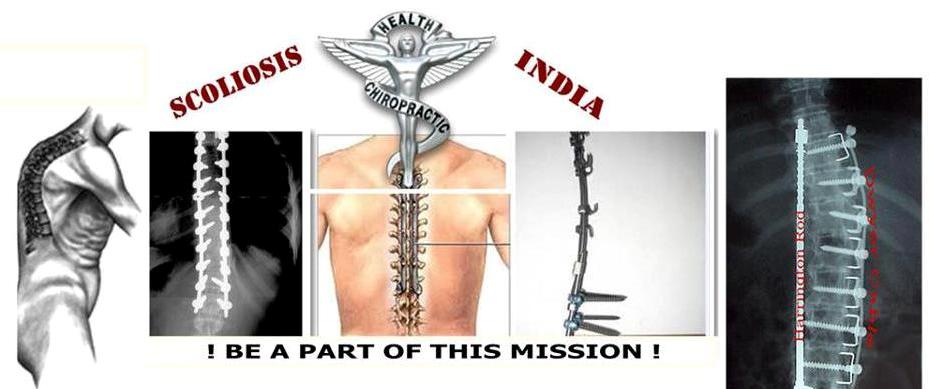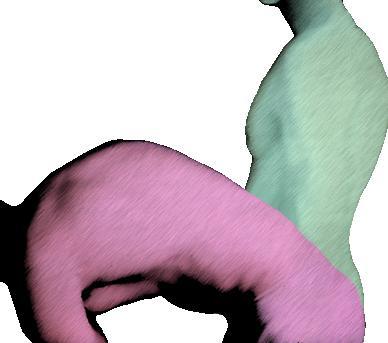SCOLIOSIS BRACE:
There’s
an old adage about the adaptability of kids: They'll consume anything
if you feed it to them early enough. They’ll chow down on kimchi without
holding their noses, and tackle broccoli without any argument. They'll
also acquire a language or two, or maybe learn to play an instrument if
so coaxed. The learning curve, in other words, is softened for those
with baby teeth.
My early adopted skill was less practical than most.
From
ages ten through 14, I was required to wear a back brace to sleep.
Designed to correct the curve of my spine, it was made of hard plastic
and lined with dense foam. It had three foot-long Velcro straps that
looped into buckles on the front. It looked a bit like the Venus de
Milo, scooped of her innards, with the arm stump twisted toward the sky.
Since
I couldn’t properly apply it myself, someone had to do it for me. My
sister, then in high school, was usually tasked. Around 10:30 each
night, I’d sheepishly knock on her door and ask her to buckle me in.
Most of the time, she was on the phone with her then-boyfriend. I’ll call you back in five, she’d tell him, I’ve got to put my sister to bed.
I’d
pull the brace over my head and wriggle it down my middle, settling
into the grooves molded to my body. I’d lie flat on the mattress while
she looped Velcro through metal, pulling the strap down over its
underside. The brace had been made from a plaster cast of my torso.
Objectively, it was a perfect fit.
I had a Charleston. Other
scoliosis brace models include the Providence, the Boston and the
Milwaukee. I had a vague supposition that my brace was so named because
the location of the curvature on my back roughly matched up with the
positioning of that southern city on the sloping eastern seaboard. I
later found the brace was in fact invented in Charleston, South Carolina
in 1978.
The Charleston's exaggerated shape, different than the
corset-like straightness of other brace models, worked to bend my spine
in the opposite direction of the curve. It encased my body and swooped
it over to one side, taking my right arm with it. When I wore it, I
looked like I was permanently performing the third part of the YMCA.
Once
I was buckled in for the night, there was no exit. I tried not to drink
too much water before bed and learned to have a very high tolerance for
hard-to-reach itches. Sleeping position options were limited to back or
stomach. It was difficult to alternate between the two, so I learned to
choose wisely early in the night.
My mother bought me a few
ultra-breathable undershirts from the doctor, but I didn’t like to wear
them. They looked like enormous socks. Instead, I’d wear loose t-shirts;
when I peeled off the brace in the morning, the skin underneath looked
like the untwisted ends of a candy wrapper.
I’d usually wake up
before my right arm did. It would writhe like an unheld hose, often
hitting me in the face. As the arm tingled back to life, I’d rip off the
brace and throw it on the floor, where it would settle with a jingle
and hollow thump.
Dr. Altongy, my orthopedist, had prescribed the
brace. Every six months when my mother and I went to see him, I’d tuck
my brace under my seat in the waiting room, watching others trying to
steal glances, smiling to myself smugly. Dr. Altongy’s office was in the
kind of snobbish northern New Jersey town that produced a lot of
children with lacrosse injuries. I sat there proudly with my plastic
shell, an anomaly amongst the casts and crutches. This was no
upper-class accident.
Every time I saw Dr. Altongy, he delivered
the same Catskillian schtick about how the curve of my spine was like
the curl of his hair. Your spine is perfectly natural, he’d say, pulling
at some strands for emphasis. It’s genetic.
However lame the
joke, he spoke the truth. My mother and her mother both have a slight
curvature, but no one in my family ever required a brace. The only other
brace I knew was strapped to the title character of a Judy Blume book, Deenie.
Deenie had dreams of becoming a model, but they were sidelined when she
was diagnosed with scoliosis. I was five-feet-tall and had braces — I
couldn’t relate much to her catwalk dreams.
But I felt emboldened
by the isolation. There were no role models to tell me how I should act
or what I should do about my condition. It was the ultimate
idiosyncrasy. I had a trait foreign to everyone in my small universe,
and I cherished it. I think that’s why I was so diligent about wearing
it. My brace became an extremity, a personality trait. I would refer to
it as my Tupperware, my strait jacket, my mini-me. Nightly discomfort
was better than losing my distinguishing feature. (And anything was
better than corrective back surgery.)
Over the years, I developed
my own schtick. I'd joke about my errant arm with friends at school.
Whenever my sister and I shared a bed, I'd threaten to steamroll her. I
anthropomorphized the brace, inventing stories about how it longed to
leave the confines my bedroom. A few times a year on family trips, or
doctor’s visits, the brace did venture out.
I liked the way it
looked on a luggage cart or tossed in the trunk of the car. There was
something charming about when it was disembodied, and out of its natural
habitat. The arabesque bend of the arm imbued it with a sense of life.
It looked as if, at any minute, it would take off.
And then one
day, I didn't need a brace anymore. My hips locked, my height was
determined and my spine was no longer malleable. I stopped wearing it
just before high school where, coincidentally, I met another girl who'd
worn a brace. Hers had a more svelte, translucent design that hadn't
been decorated with stickers. She called it a vest, not a brace. We wore
them together for fun at sleepovers.
The two iterations of my
night brace, along with the day brace I wore in eighth grade, now live
in the back of a closet in my parent's house. I came across them a few
years ago when looking for a suitcase. I couldn't believe I'd ever been
that small.
Source: The Huffington post, 24th June 2015






